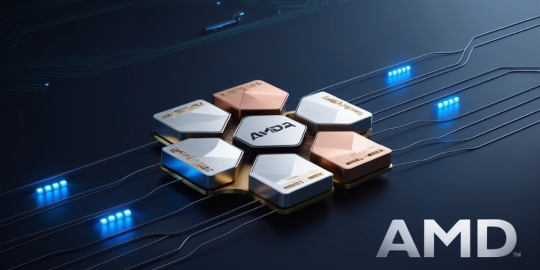
In the world of computer graphics, advancements happen at a blistering pace. AMD has recently unveiled a patent that hints at groundbreaking changes in how graphics processing units (GPUs) are constructed, specifically through the adoption of a “multi-chiplet” design for their upcoming RDNA architectures. This innovative approach could redefine performance and scalability in gaming and professional applications alike. Let’s delve deeper into these promising developments in AMD's GPU strategy.
Embracing Change in GPU Architecture
For years, monolithic designs have been the standard in GPU development. Typically, these designs feature a single die, leading to limitations regarding scalability and performance enhancements. However, the industry is witnessing a notable shift toward Multi-Chiplet Modules (MCMs), which offer significant advantages. AMD is pioneering this transformation, drawing from their experience with MCM designs in AI accelerators, such as the Instinct MI200. This shift not only positions AMD as a leader in graphics technology but aims to enhance the efficiency and performance of their GPUs.
The MCM Advantage
The advantages of MCM technology lie in the potential for increased performance and scalability. AMD’s current lineup, including the Navi 31 architecture, has already begun to incorporate elements of this design. By stacking different chiplets that handle various processing duties, they are able to transcend traditional monolithic limitations, paving the way for future developments in graphics capabilities. The most recent patent claims an even broader adoption of multi-chiplet approaches in RDNA architectures.
Modes of Operation
AMD's patent outlines an intriguing framework that includes three distinct modes of operation for chiplet utilization. The first mode, termed "single GPU," allows multiple chiplets to function as a cohesive unit, reminiscent of current GPU functionality. This centralized processing approach enhances collaboration between resources, leading to improved performance.
The second mode, known as "independency mode," enables each chiplet to operate autonomously. In this configuration, a dedicated front-end die orchestrates task scheduling across individual shader engine dies, promoting specialized efficiency.
The most visionary configuration is the "hybrid mode," which merges the benefits of both the single GPU and independence modes. In hybrid mode, chiplets can function independently while simultaneously cooperating when necessary. This flexibility offers remarkable scalability and optimal resource management, representing a significant leap forward in GPU architecture.
Challenges on the Horizon
While the promise of multi-chiplet designs is exciting, there are significant challenges to consider. The complexity of producing these configurations can introduce higher production costs and necessitate advanced manufacturing equipment. AMD’s innovative approach requires precision and sophistication at every step of the design process, which may initially pose logistical hurdles.
Current Landscape and Future Directions
To date, AMD has not fully realized a multi-GPU die solution for mainstream consumers. The existing Navi 31 models still operate on a monolithic basis, with single Graphics Compute Dies (GCDs) guiding performance. However, there is anticipation that the upcoming RDNA architectures will explore deeper into multi-chiplet designs. The potential inclusion of dedicated Shader Engine blocks within multiple GCDs stands to revolutionize the market.
Rumors had previously suggested that AMD was considering a similar approach for their RDNA 4 graphics cards, codenamed Navi 4X/Navi 4C. Though those plans appear to have shifted towards more traditional monolithic solutions, there remains optimism about the return of multi-chiplet technology with future RDNA 5 iterations. This adaptability to mainstream demands showcases AMD's commitment to innovation, while also responding to the needs of the consumer market.
Conclusion
The exploration of multi-chiplet designs marks a significant milestone in AMD’s GPU evolution. With ongoing advancements in manufacturing technology and the implementation of high-NA equipment, the landscape of GPU architecture could see substantial transformations. Team Red's prior experiments with multi-chiplets underline their expertise and willingness to push boundaries, suggesting that future RDNA architectures may indeed usher in a new era of graphics performance. As AMD strives to integrate this design philosophy into mainstream offerings, the implications for gaming, rendering, and high-performance computing could be profound, reshaping consumer expectations and industry standards alike.
With the anticipation surrounding AMD’s advances, one can expect the upcoming years in graphics technology to be both exciting and transformative. As competitors respond and innovate in their own right, the battle for supremacy in the GPU space will undoubtedly lead to remarkable developments that benefit all users, from gamers to professionals. Only time will reveal the full impact of AMD's pioneering work in multi-chiplet architectures, but the path ahead is laden with potential and promise.